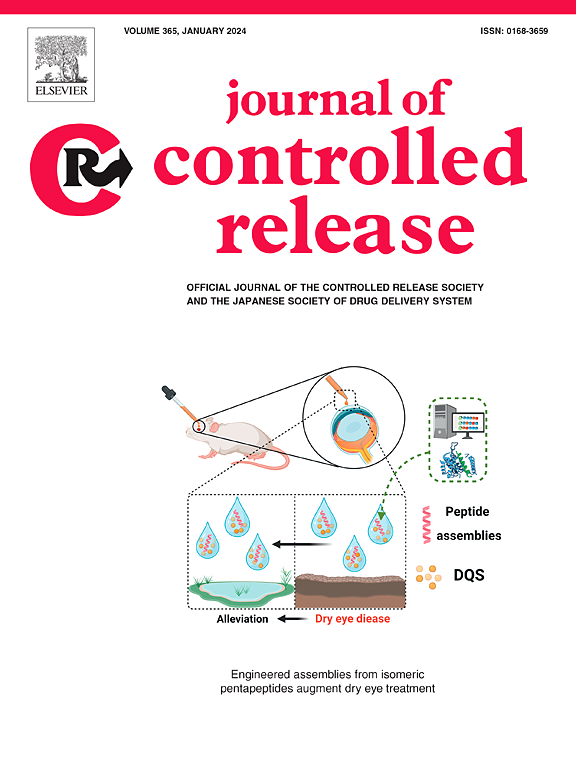Synergistic chemo-photothermal treatment via MXene-encapsulated nanoparticles for targeted melanoma therapy
IF 10.5
1区 医学
Q1 CHEMISTRY, MULTIDISCIPLINARY
引用次数: 0
Abstract
Owing to its high photothermal conversion efficiency, MXene has garnered strong interest in biomedical applications. MXene has demonstrated significant promise particularly in chemo-photothermal cancer therapy. However, MXene's inherent instability in aqueous environments poses challenges for advanced biological applications. Here, we address this limitation by encapsulating MXene nanoparticles (NPs) within an amphiphilic polymer matrix of hyaluronic acid and poly(lactide-co-glycolide) (HA-PLGA/MX NPs), enhancing photothermal stability and functionality in physiological conditions. Moreover, to achieve targeted chemo-photothermal therapy, we co-loaded the anticancer agent paclitaxel (PTX) with HA-PLGA/MX (HA-PLGA/MXP NPs), facilitating simultaneous delivery of heat and drug to tumor sites. The HA-PLGA/MXP NPs were synthesized using a straightforward water-oil-water emulsion method and extensively characterized for drug release assays to confirm their suitability as dual-functional nanocarriers. Both in vitro and in vivo studies demonstrated that HA-PLGA/MXP NPs, under laser irradiation, achieved obviously enhanced therapeutic efficacy, with an ∼81.9 % cell death rate and a ∼95.7 % tumor inhibition rate, outperforming the effects of chemotherapy or photothermal therapy alone. Integrating MXene in HA-PLGA encapsulation introduces a potent platform for melanoma treatment, offering synergistic therapeutic potential by combining photothermal activity with sustained drug release, highlighting a promising approach to targeted cancer therapy, and advancing the field of NP-based chemo-photothermal therapeutics.


通过 MXene 封装纳米粒子进行协同化疗-光热治疗,实现黑色素瘤靶向治疗
本文章由计算机程序翻译,如有差异,请以英文原文为准。
求助全文
约1分钟内获得全文
求助全文
来源期刊

Journal of Controlled Release
医学-化学综合
CiteScore
18.50
自引率
5.60%
发文量
700
审稿时长
39 days
期刊介绍:
The Journal of Controlled Release (JCR) proudly serves as the Official Journal of the Controlled Release Society and the Japan Society of Drug Delivery System.
Dedicated to the broad field of delivery science and technology, JCR publishes high-quality research articles covering drug delivery systems and all facets of formulations. This includes the physicochemical and biological properties of drugs, design and characterization of dosage forms, release mechanisms, in vivo testing, and formulation research and development across pharmaceutical, diagnostic, agricultural, environmental, cosmetic, and food industries.
Priority is given to manuscripts that contribute to the fundamental understanding of principles or demonstrate the advantages of novel technologies in terms of safety and efficacy over current clinical standards. JCR strives to be a leading platform for advancements in delivery science and technology.
 求助内容:
求助内容: 应助结果提醒方式:
应助结果提醒方式:


